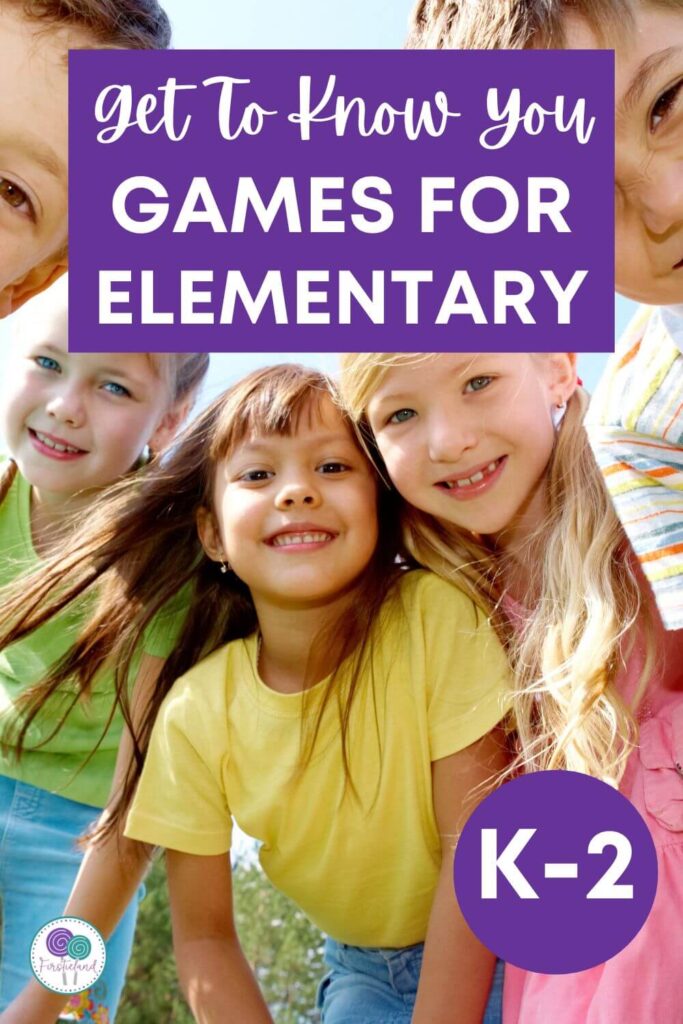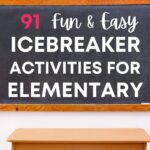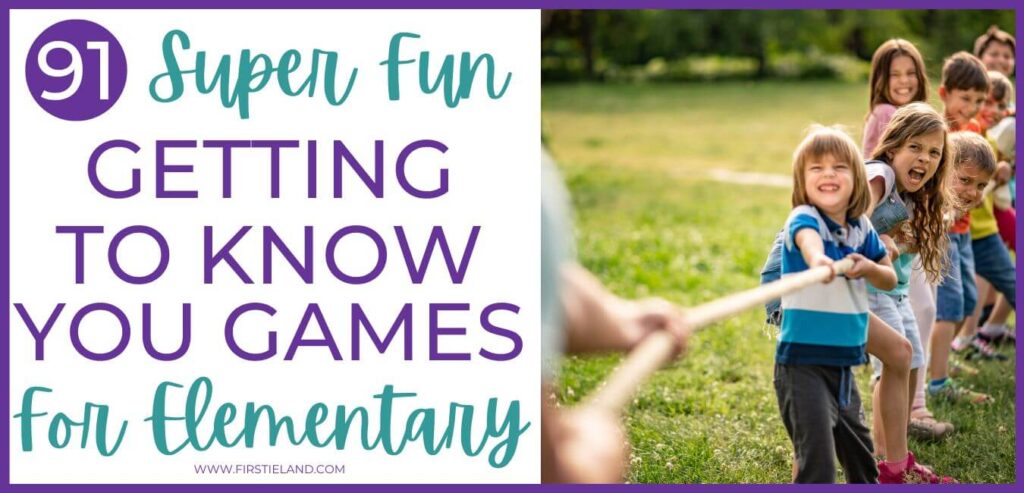
Looking for some getting to know you games for students? These ice breakers are a great way for new students to make friends during the first few weeks of school.
First Day Of School Icebreakers
1. Beach Ball Toss: Label a beach ball with words like “favorite food”, “favorite color”, and “favorite tv show”. Students can sit in a circle and toss the ball back and forth around the circle. Wherever your hand lands when you catch the ball is what you tell the group.
2. Find a Friend: Give each student a picture or word card. They need to find their matching friend by locating the person with the corresponding card.
3. Classmate Interview: Pair up students and have them interview each other using a list of simple questions on a piece of paper. As they find new friends who like some of the things on the list their new friend writes their name under the activity.
4. Memory Game: Place various objects on a tray and show them to the class for a few seconds. Cover the tray and ask students to recall as many items as possible. The student with the most correct answers wins.
5. What's in the Bag?: Fill a bag with various objects. Have students take turns reaching inside the bag without looking and describing what they feel to the class. Others can guess what's in the bag.
6. Friendship Bracelets – Pair students up with a new friend for the day and have them make friendship bracelets together. They can help each other tape the bracelet to their wrist when finished.

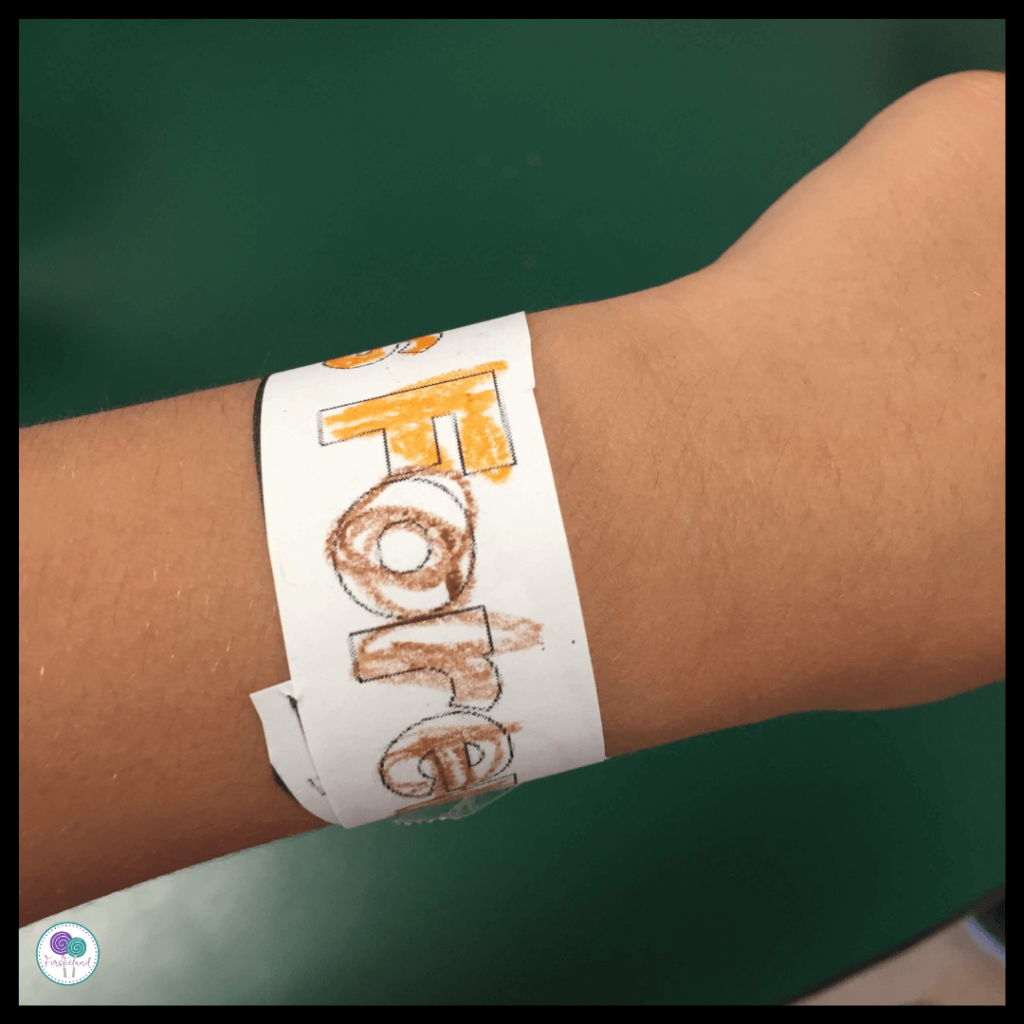
7. Musical Chairs: Play upbeat music and have students walk around the chairs. When the music stops, they have to find a seat. The student left standing can share an interesting fact about themselves. This is a really fun way to get to know other kids!
8. Friendship Web: Sit in a circle and have each student hold a ball of yarn. They say their name and one thing they like, then toss the yarn to someone across the circle, creating a web of connections.
9. First Day Jitters: Read the book First Day Jitters by Julie Danneberg. Have students write how they are feeling on the first day of school and make some jitter juice to take those nervous feelings away!
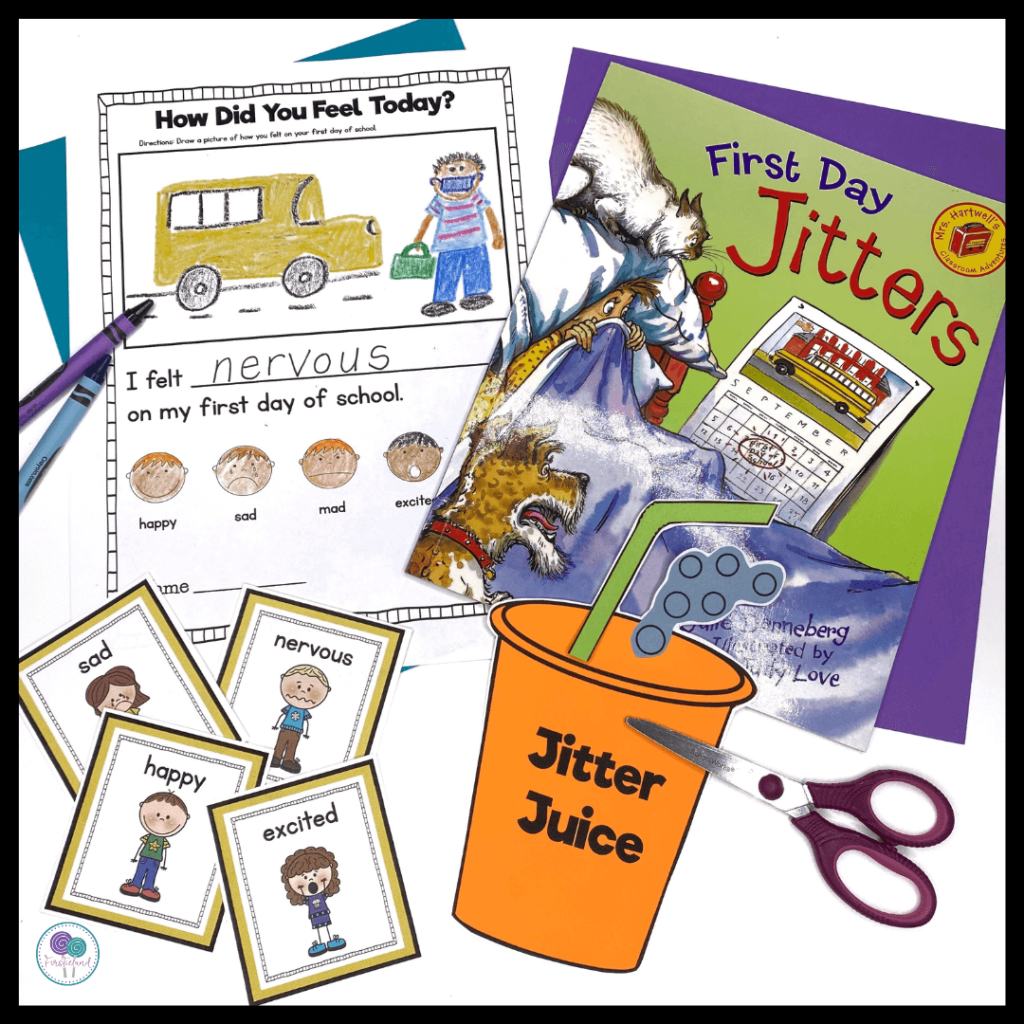
9. Emotion Charades: Write different emotions on slips of paper and have students act them out without speaking. Others must guess the emotion being portrayed. This is also a great opportunity to find out how kids are feeling during the first week of school. Ask questions like “Who felt scared to come to school – or who felt excited?”
10. Guess Who?: Write descriptive clues about each student on index cards. Read the clues aloud, and students guess who is being described. You can have things like hair color, favorite songs, boy or girl, and how many brothers or sisters on the cards.
11. New School Shoes: Read the book Pete The Cat I Love My White Shoes by James Dean. Then have students write about their new school shoes and make a cute shoe craft.
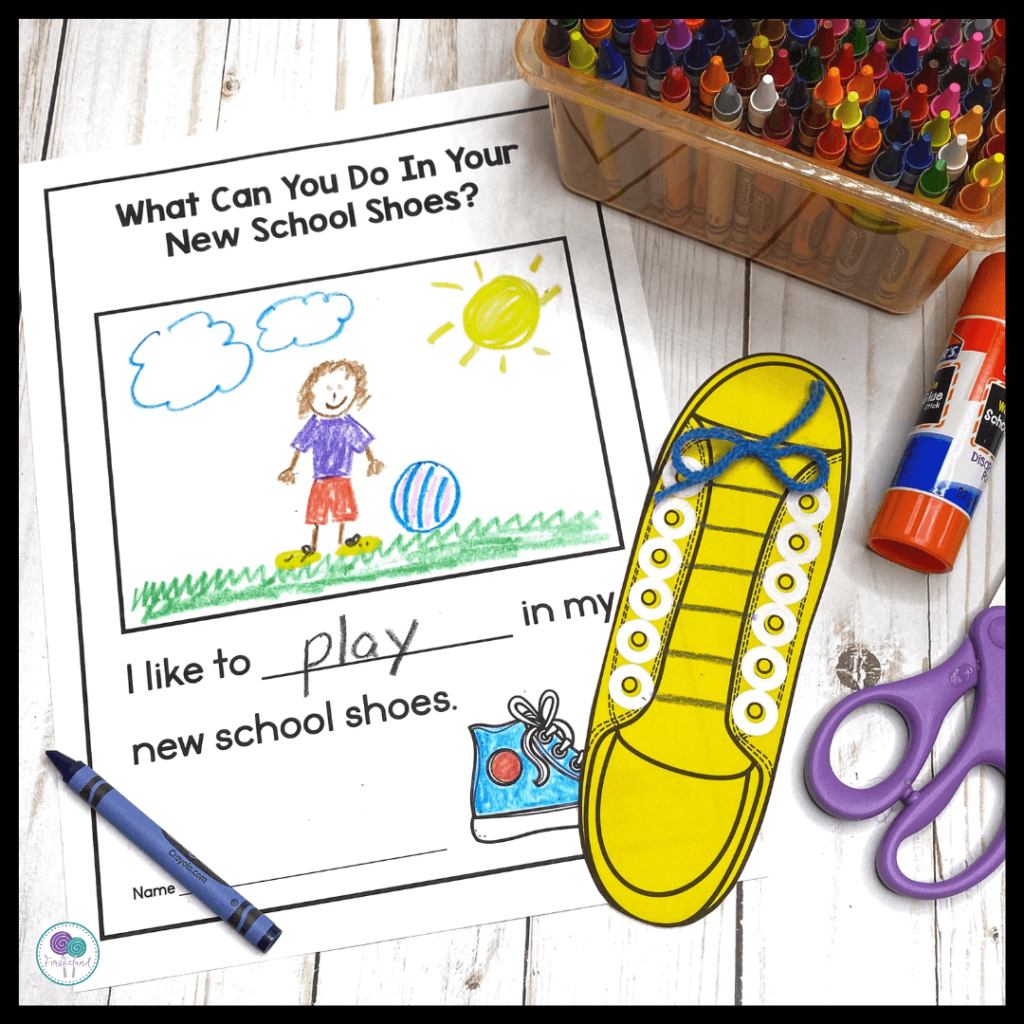
11. Friendship Memory Game: In this game, students work with a partner to play the classic game of memory. Each friendship memory picture card has a different activity that friends would do together like play on the playground, read books, or go swimming. This is a great game to play when you want to reinforce how to be a good friend to others.
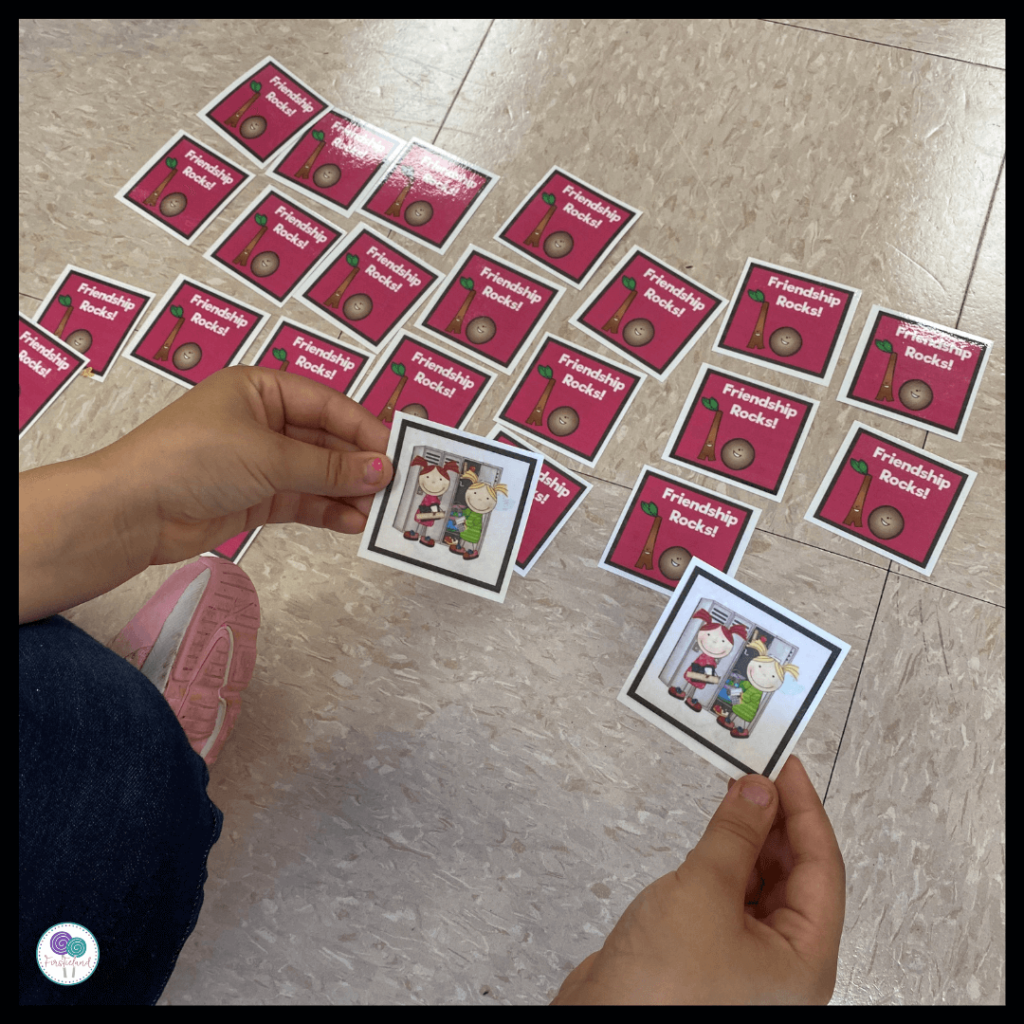
12. Simon Says: Play the classic game of Simon Says, using simple actions and movements. This is a great icebreaker game because it gets kids up and moving.
13. Story Starters: This is a great game to play with the entire class. Provide each student with a sentence starter (e.g., “Once upon a time, I found a magical key…”). Students sit in a circle and take turns adding a sentence to continue the story.
14. Would You Rather?: Present students with silly choices (e.g., Would you rather have a pet dinosaur or a pet alien?). Students take turns answering and explaining their choices. Younger students love anything silly!
15. Show and Tell: Allow students to bring in an item from home to share in front of the class. They can explain why it's special to them.
16. Freeze Dance: There are so many fun icebreaker games you can play at the beginning of the school year. One of my students' favorites is always Freeze Dance. Play music and have students dance. When the music stops, they freeze in place. The last one to freeze can share a fun fact about themselves.
17. Deserted Island – Have students sit in a circle and pose the question “If you were stranded on a desert island, what is the one thing you would take with you?” Fun icebreaker games like this can help kids get to know each other during the first week of school.
CLICK HERE TO VIEW THE BACK TO SCHOOL BUNDLEIce Breaker Activities To Build Classroom Community
18. Compliment Cards: Put all of the students' names in a basket. Have each student choose a name and write a compliment card to that person telling them something they like about this new friend.
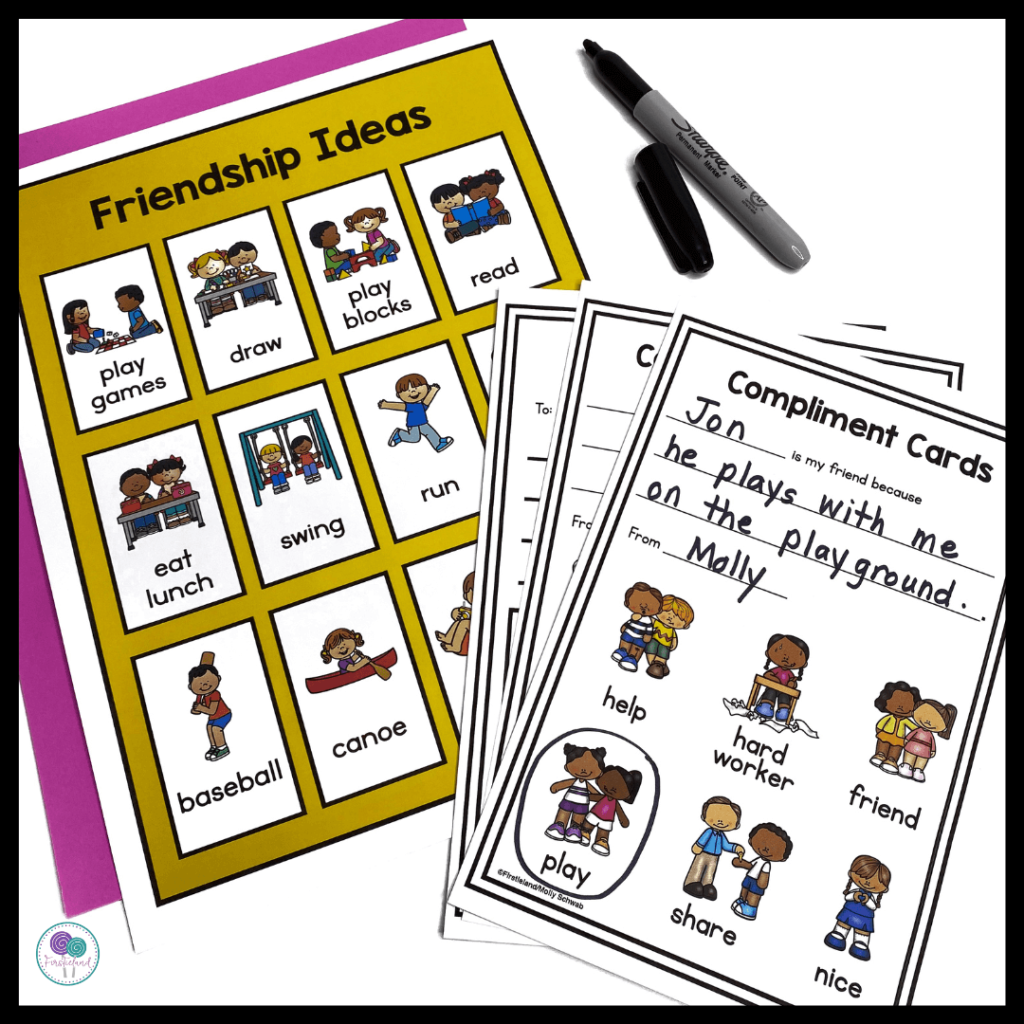
19. Kindness Chain: Provide each student with a strip of paper. Throughout the week, students can write or draw acts of kindness they witness or experience. Connect the strips to create a kindness chain.
20. Plant Seeds of Kindness: Read the book Planting Seeds Of Kindness by Rose Bunting. Then make a list of different ways you can plant seeds of kindness in your class. Give each student a cup to decorate and allow them to plant their own seeds. Tell them as they water these seeds they will grow, just as their friendships will grow in the classroom.

21. Feelings Charades: Students take turns acting out different emotions while others guess the feeling being portrayed. Discuss how to respond with empathy and support when someone feels a certain way.
22. Create a gratitude jar: Read the book “The Gratitude Jar” to your class and talk to them about what it means to be grateful. Place a gratitude jar in a prominent place in your classroom with special gratitude cards. Make it a part of your daily morning routine to write one thing you are grateful for as a class each day. Pick a day in the future to read all of the gratitude cards together. This is a great activity to do around Thanksgiving.
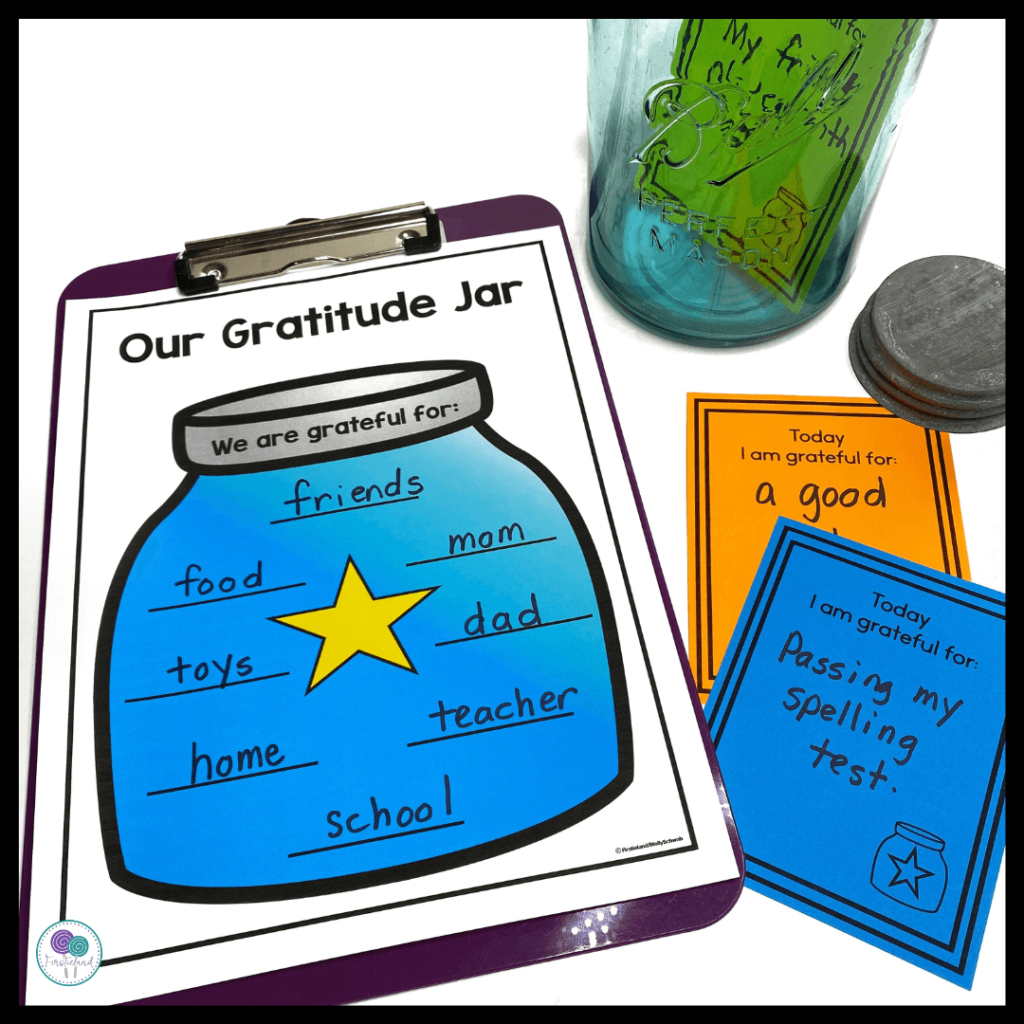
23. Cooperative Coloring: Assign a large coloring page to the whole class. Each student contributes by coloring a small portion of the picture. Emphasize the importance of working together to complete the masterpiece.
24. Classroom Compliments Board: Set up a bulletin board with each student's name. Encourage students to write compliments or kind notes for their classmates and attach them to the corresponding names.
25. Magic Words: Introduce your students to Respectful Rachel. She's part of The Behavior Bunch superheroes. Tell them that she's here to teach your students the magic words. Put some different scenarios on cards and have students tell you which magic word they would say. For instance, if the card says “Your friend let you play with their favorite toy.” The student could choose the magic word “thank you” and say “Thank you for letting me play with your toy. This is a great way to help students understand how using nice words can help them make friends.
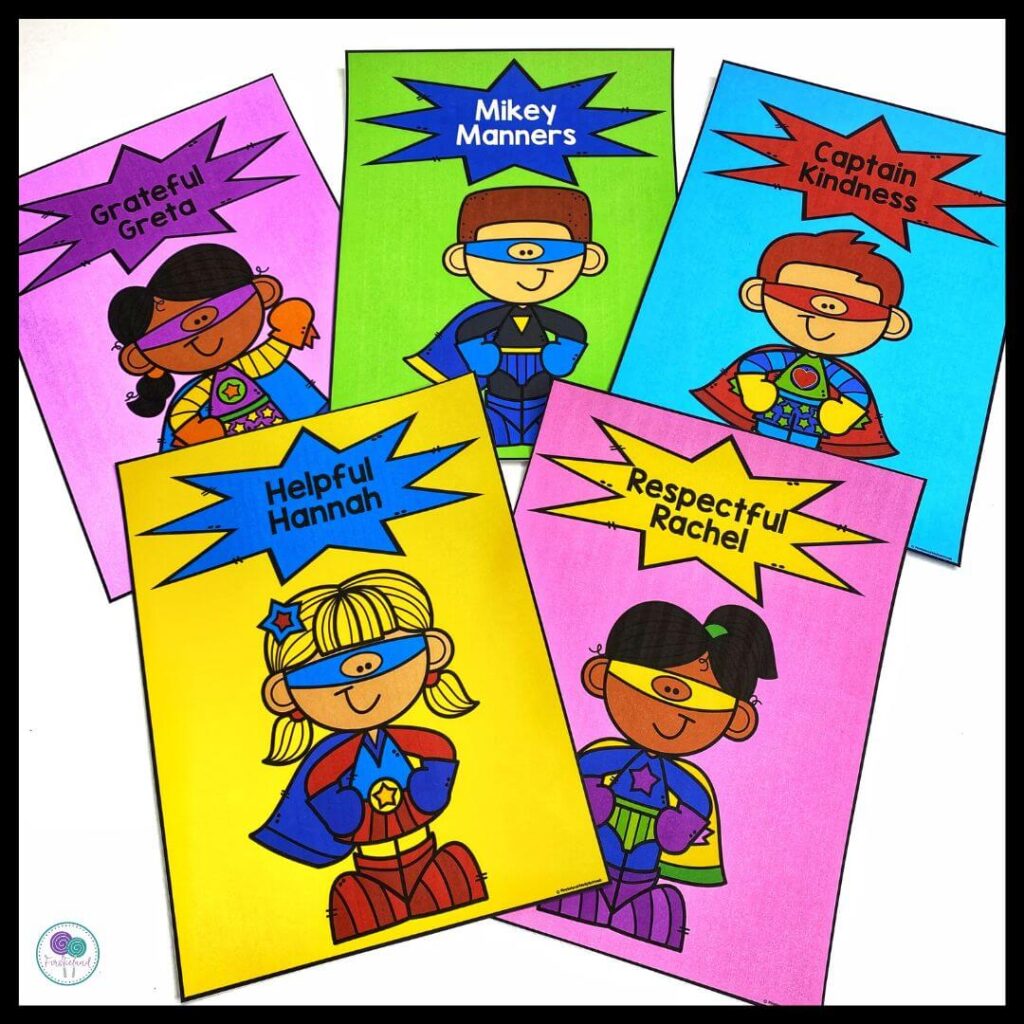
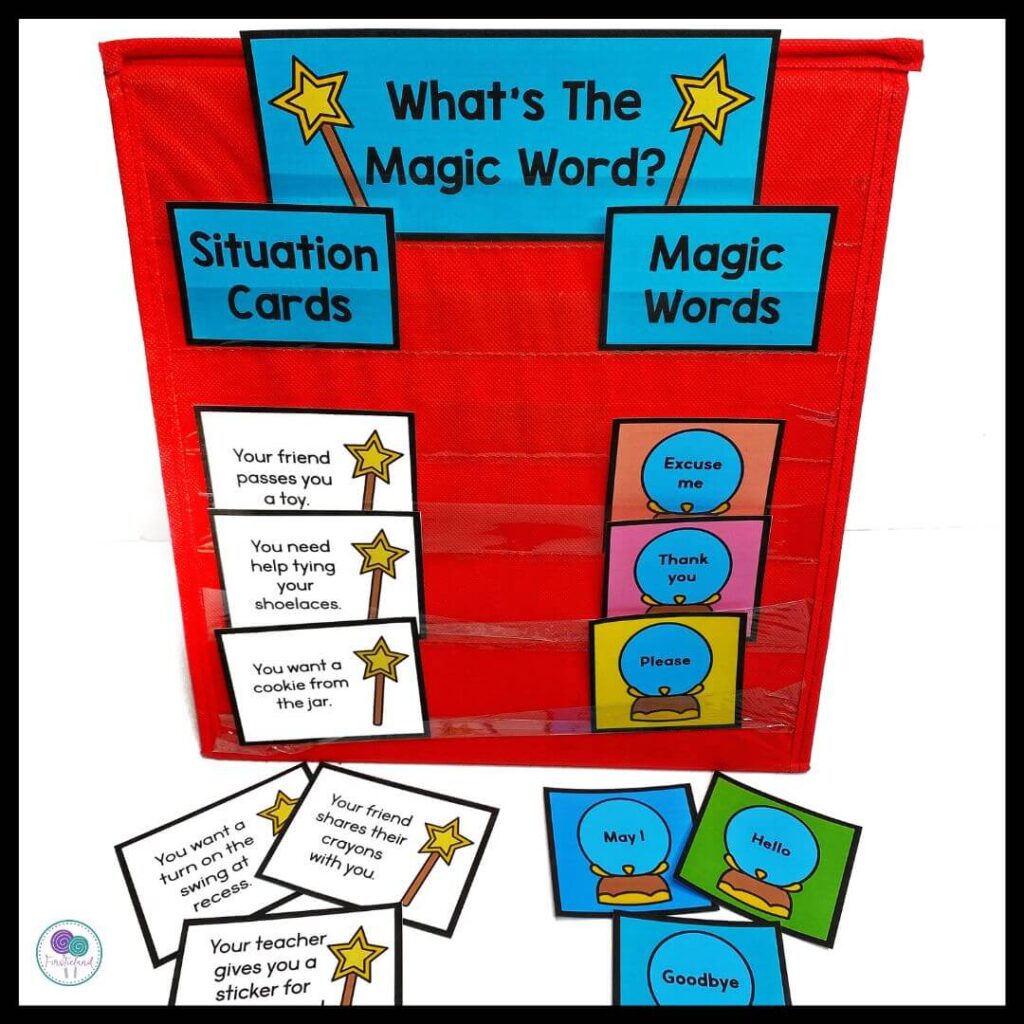
26. Kindness Bingo – Create a bingo grid with different acts of kindness in each square. Students try to complete rows or columns by performing the kind acts throughout the week.
27. Secret Buddy: Assign each student a secret buddy for a week. During that time, students perform random acts of kindness for their buddy without revealing their identity. Celebrate the acts of kindness at the end of the week.
28. The Helping Game – have your students play the helping game and learn how random acts of kindness will make your classroom a better place to be each day.
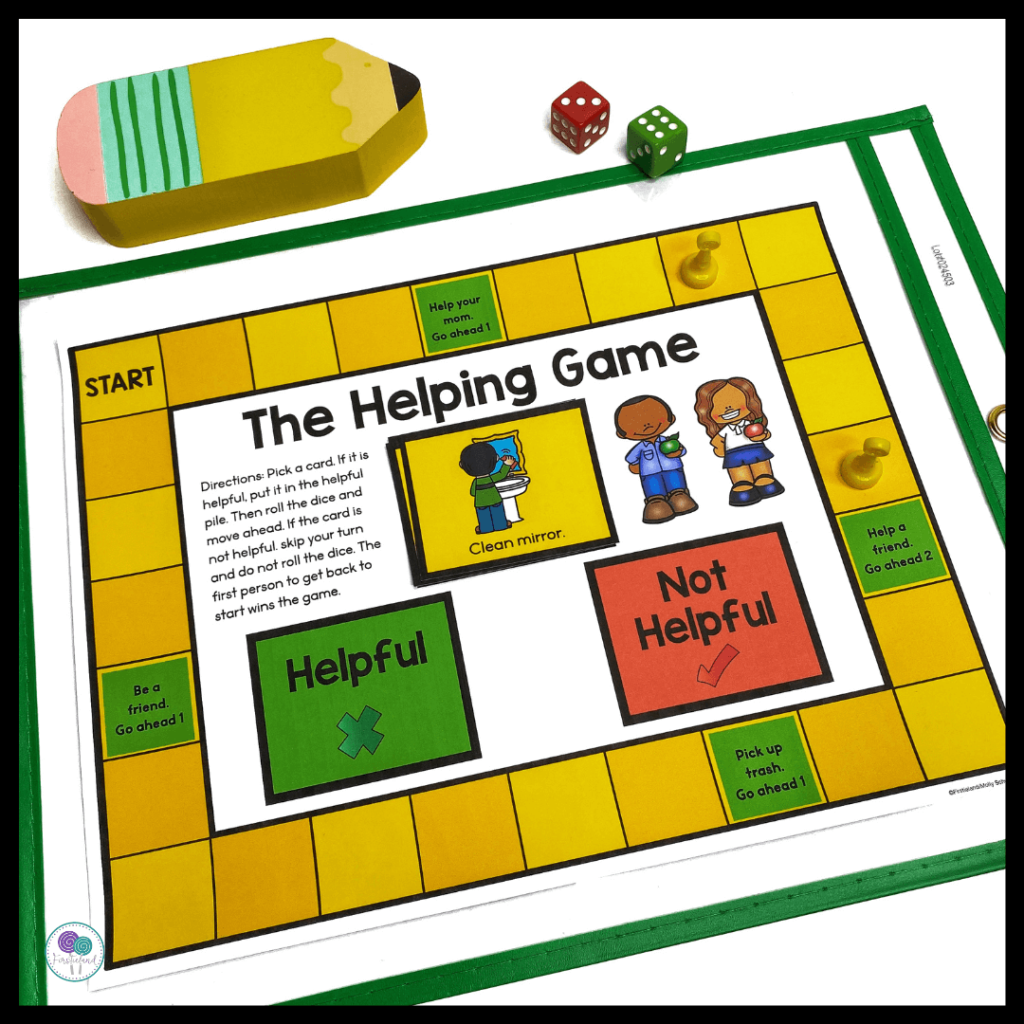
29. Friendship Soup: Discuss the ingredients for a good friendship, such as kindness, listening, and sharing. Have students work together and follow the recipe to make friendship soup.
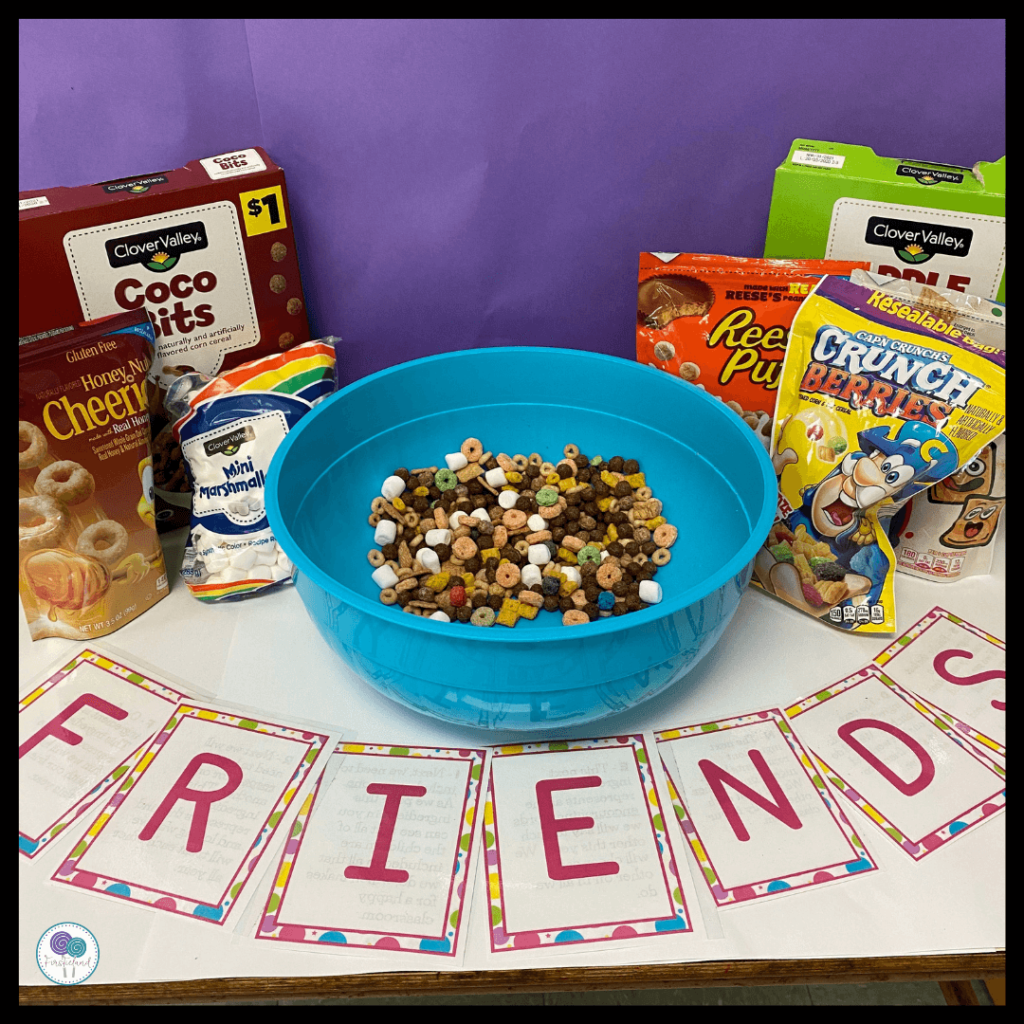
30. Positive Storytelling: Sit in a circle and start a story with a positive theme, such as friendship or teamwork. Each student adds a sentence to continue the story, focusing on positive and uplifting elements.
CLICK HERE TO VIEW THE BEHAVIOR BUNCH SEL UNITGetting To Know You – All About Me Games
31. Family Collage: Provide students with magazines, scissors, and glue sticks. They cut out pictures of family members and create a collage representing their family.
32. Me in a Bag: Ask students to bring in a small bag with three items that represent something important to them. They share the items and explain why they are significant.
33. Family Interview: Have students interview a family member at home, asking questions about their family history, traditions, or favorite activities. They can share their findings with the class. This is a great icebreaker activity because it's a great way to see if students have common ground with one another.
34. Family Tree: Students create a simple family tree, drawing pictures of their family members and labeling their relationships.
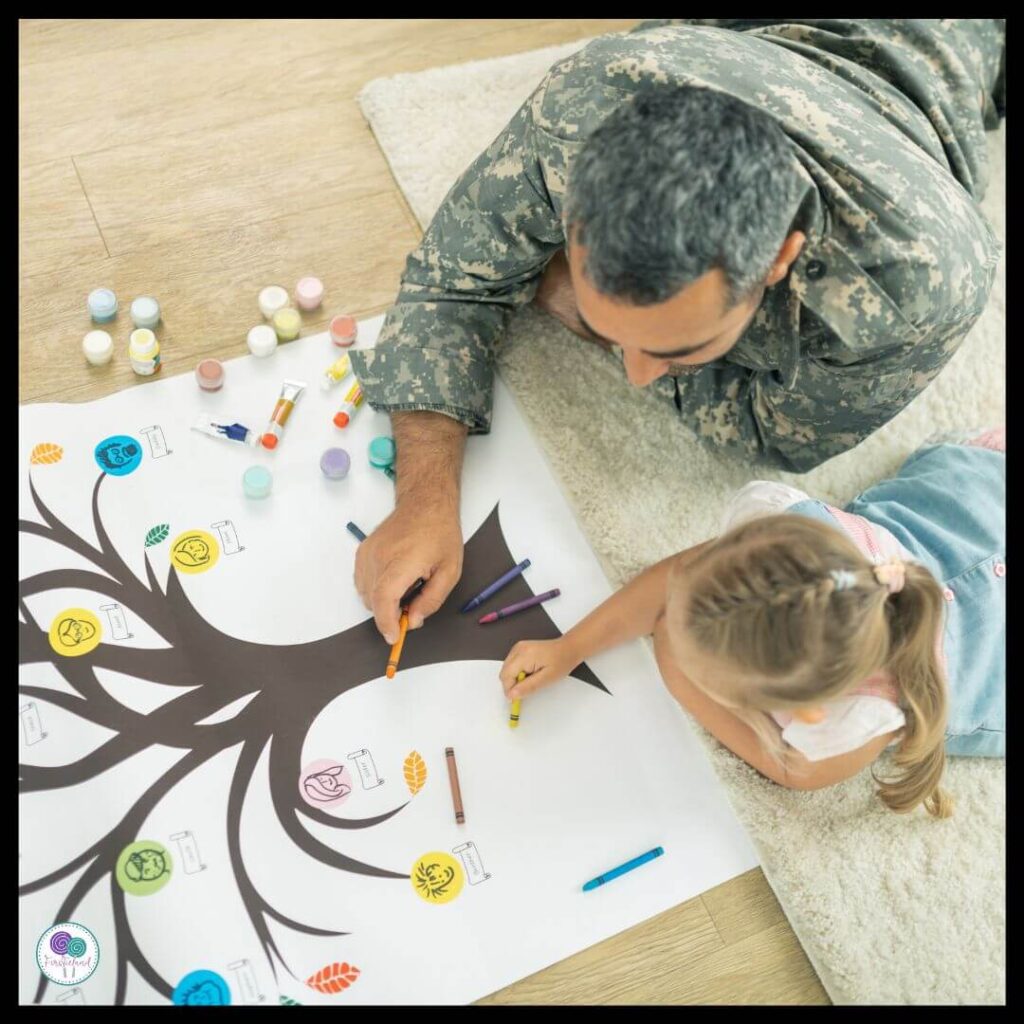
35. All About Me Collage: Provide magazines, scissors, and glue sticks. Ask students to cut out pictures and words that represent their interests and create a collage about themselves.
36. My Favorite Things Bingo: Create bingo cards with different categories (e.g., favorite color, animal, food). Students fill in their own bingo card with their favorite things. Play bingo by calling out categories, and students mark their cards accordingly.
37. My Family Story: Each student brings in a family photo and shares a story or memory associated with it. They can describe the group of people in the photo and explain why it is special.
38. My Favorite Things: Have students draw pictures or write sentences about their favorite things (e.g., favorite color, animal, food) and share them with the class.
39. My Superpower: Students imagine they have a superpower and draw a picture of themselves as a superhero. They explain their superpower and how they would use it to help others.
40. Family Portrait: Students draw a picture of their family and describe the unique qualities of each family member. They can also share any fun activities they enjoy doing together.
41. “Guess Who” Family Edition: Each student brings in a baby picture of themselves. The teacher displays the pictures, and students try to match the baby picture with the correct classmate.
Team Building Games For Kids
42. Tug of War: Divide the class into two teams and have them participate in a friendly game of tug of war. Encourage teamwork and cooperation to win.
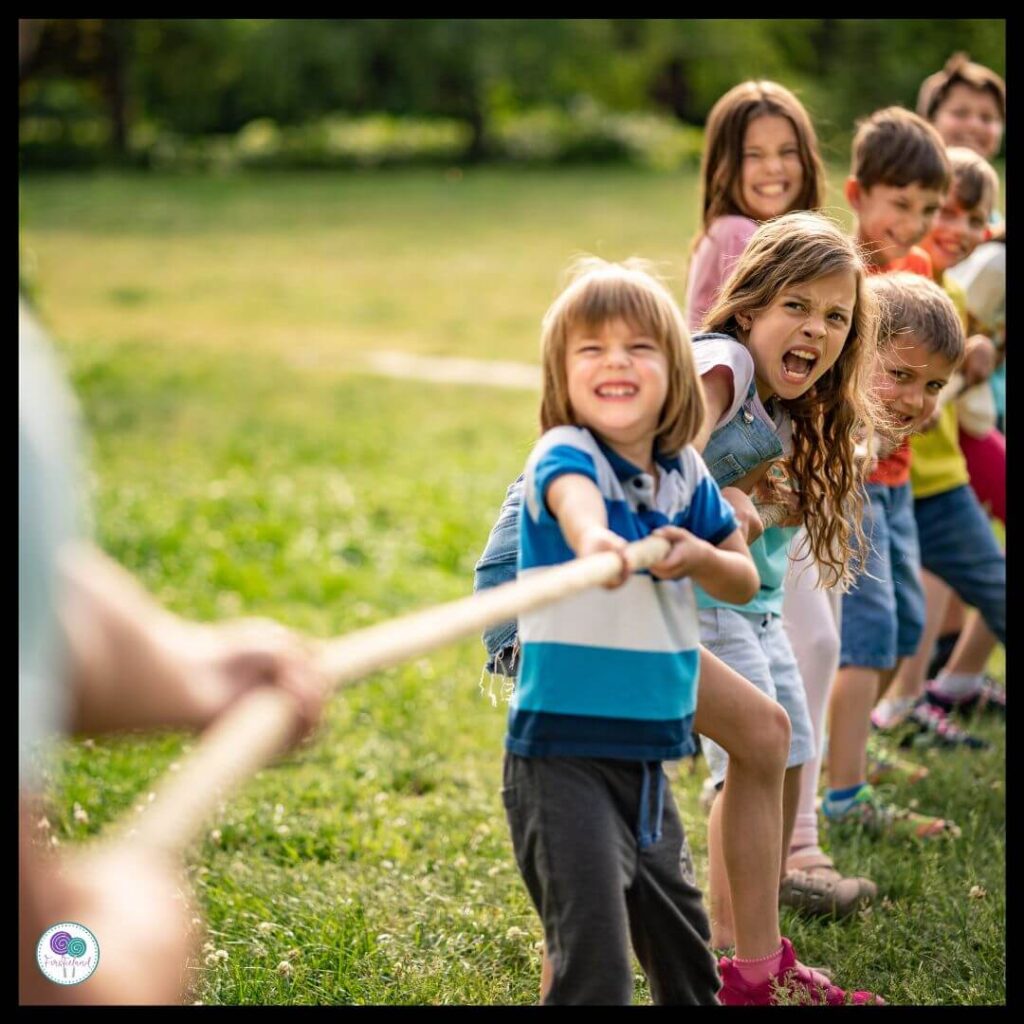
43. Balloon Relay: Set up a relay race where students have to pass a balloon between their legs to their team members without using their hands. The first team to finish wins.
44. Hula Hoop Pass: Form teams and have students pass a hula hoop down the line to the next person without letting go of each other's hands. The first team to complete the pass wins.

45. Build a Tower: Give each team a set of materials (such as cups, blocks, or index cards) and challenge them to build the tallest tower they can within a time limit. This is a fun game to play in small groups.
46. Beach Ball Bonanza: Write different challenges or questions on a beach ball. Have students sit together in small teams and toss the ball to someone in the group. The group members must work together to answer the question or perform the challenge written under their thumb.
47. Spider Web: Use tape to create a large “spider web” between two chairs or objects. Students must work together to pass through the web without touching the tape and getting stuck in the web.
48. Puzzle Race: If you're looking for quick ice breaker games, Puzzle Race is a good one. Provide each team with a puzzle and see which team can assemble it the fastest.
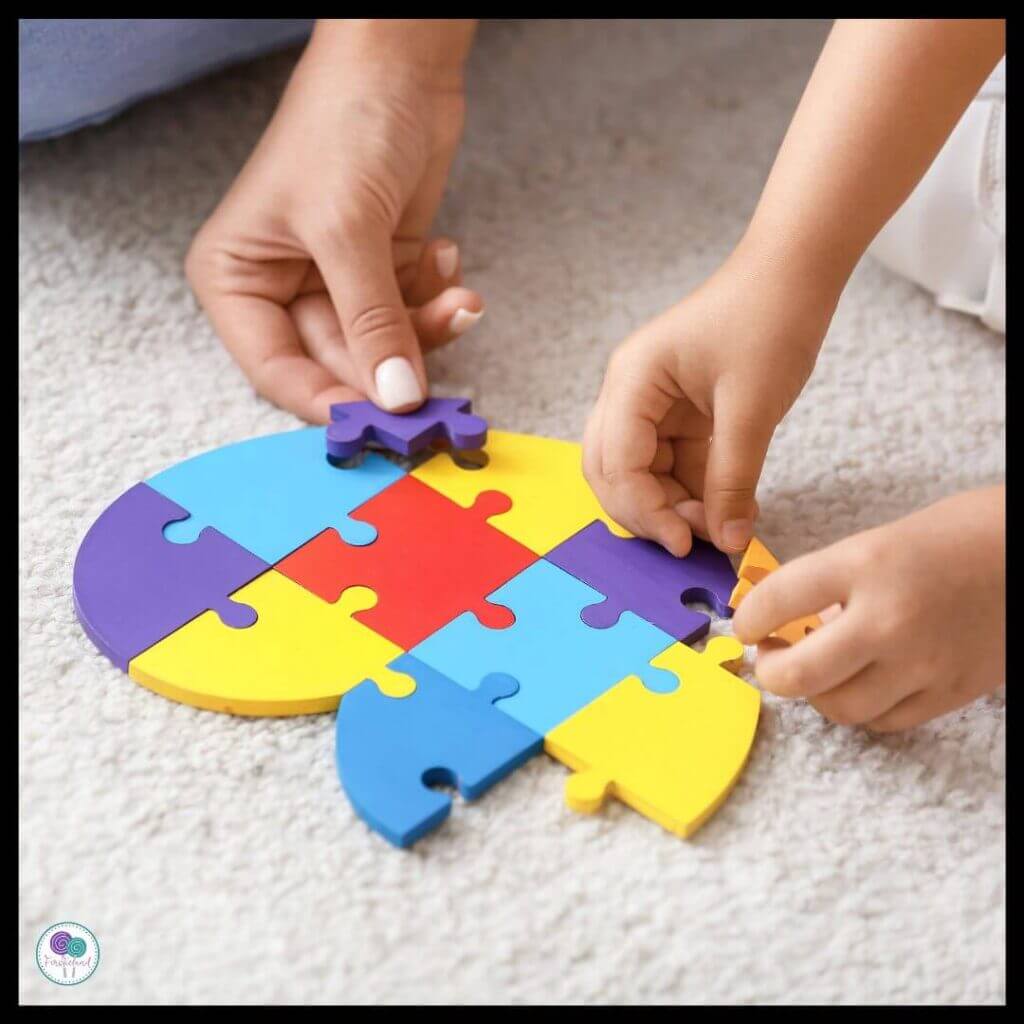
49. Group Drawing: Divide students into teams and give each team a large sheet of paper and markers. They must work together to create a collaborative drawing. This is one of the best ice breaker games because there is no right or wrong way to draw the picture. It can be anything the group agrees upon.
50. Animal Charades: Each team selects an animal and takes turns acting out that animal while the others guess. The team that guesses correctly earns a point.
51. Cooperative Storytelling: Begin a story and have each team member contribute a sentence or idea to continue the narrative. Encourage teamwork to create a cohesive story.
52. Shape Scavenger Hunt: Provide teams with a list of shapes to find in the classroom. Students must work together to locate and identify the shapes.
53. Sack Race: Divide the class into teams and organize a sack race. Students must hop inside sacks while working together to reach the finish line.
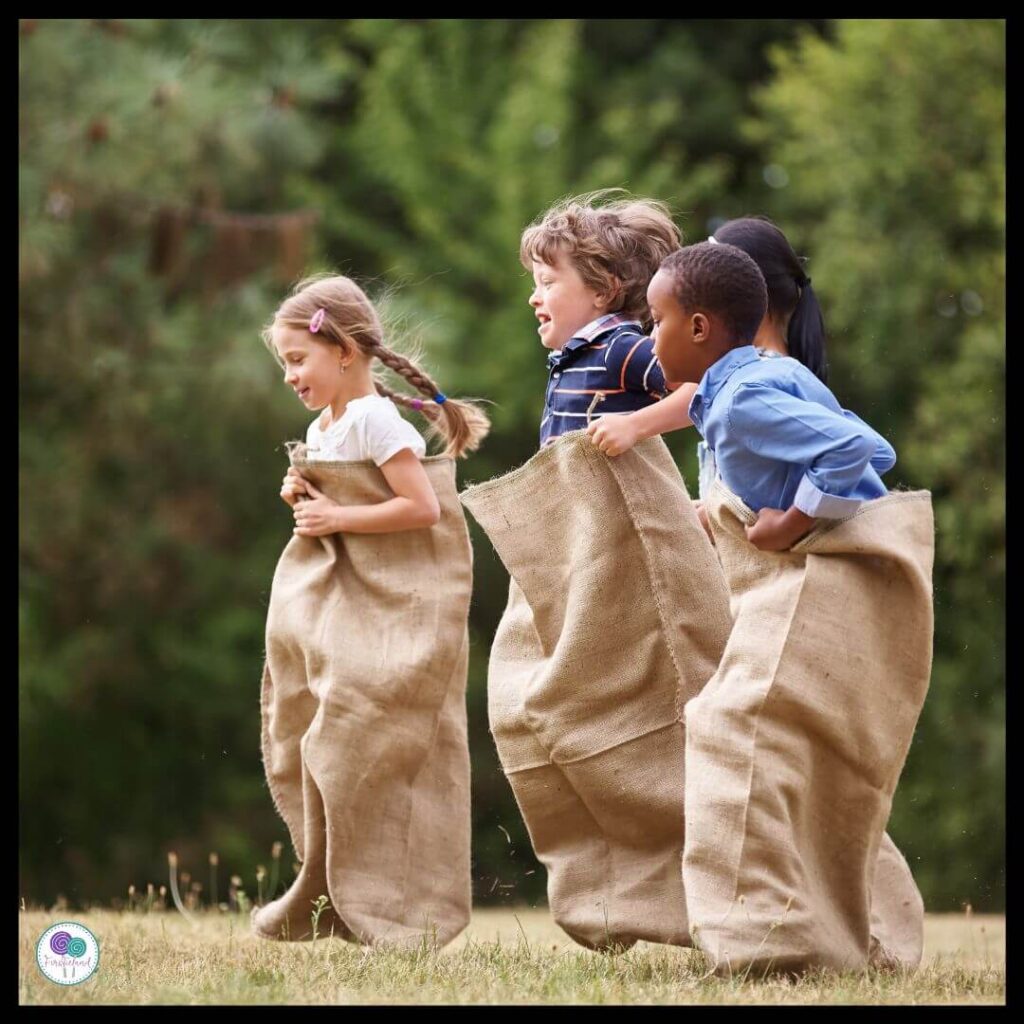
54. Word Chain: Start with a simple word, and each team member adds a word that starts with the last letter of the previous word. See how long the chain can get without breaking. Another way to play this game is to have kids make a word chain and put the words in alphabetical order.
55. Water Bucket Relay: Set up a relay race where teams must carry a cup of water on their heads or with a spoon without spilling it to the other side of the room. The team with the most water left wins.
56. Mirror Mirror: Students pair up and face each other. One student becomes the “mirror” and must imitate the movements of the other student. Encourage teamwork and synchronization. Young students really love this one and think it's a great ice breaker at the start of the year.
57. Team Origami: Provide teams with origami instructions and paper. They must work together to follow the instructions and create the origami shape.
58. Counting Challenge: Give each team a container of objects (e.g., buttons or counting cubes). They must work together to count and organize the objects correctly within a time limit.
59. Human Bridge: Students form two lines, facing each other, with their arms raised. The rest of the team must pass under the “bridge” without touching it.
60. Word Builder: Give each team a set of letter cards. They must work together to create as many words as possible using only those letters within a time limit.
61. Team Craft – give each team a tray of paper scraps, glue, scissors, and crayons. Each team must work together to create some kind of craft. You can make it specific like a certain kind of animal or monster. Or it can simply be a collage. The point is to work together and have fun.
Scavenger Hunt Games
62. Kindness Rocks – Have students work in small groups to paint kindness rocks. When they are dry, hide them on the playground for other students to find. This is a great way for students to meet different people in other classrooms too.
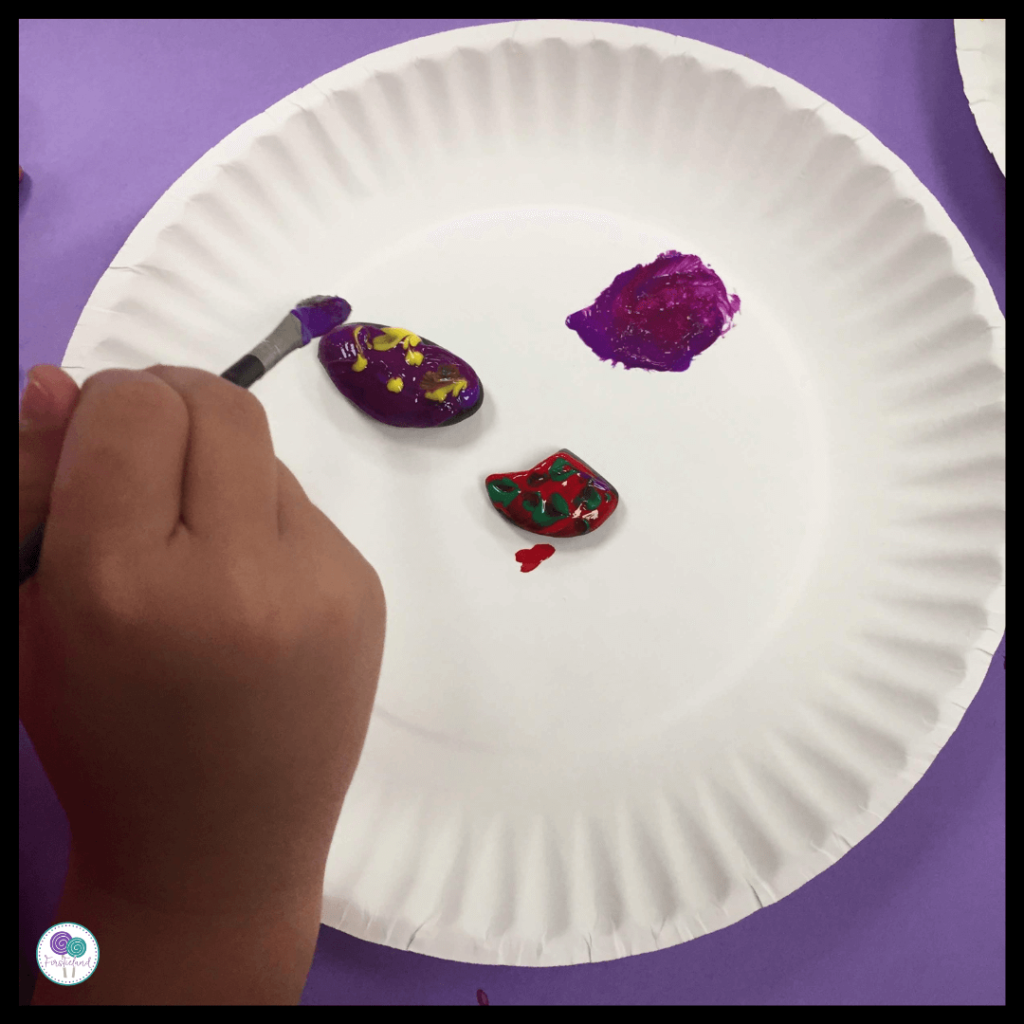
63. Classmate Find: Create a scavenger hunt checklist with descriptions or drawings of different attributes or hobbies (e.g., “Find someone who likes soccer,” “Find someone who has a pet”). Students find classmates who match each description and have them sign their checklist.
64. Color Hunt: Create a color-themed scavenger hunt where students search for objects of different colors around the classroom or school. They pair up with someone who found an object of the same color and learn one interesting fact about each other.
65. Alphabet Scavenger Hunt: Give each student a paper with the alphabet written vertically. They need to find objects in the classroom that start with each letter and write or draw them. Encourage students to share their findings with a partner.
66. Treasure Map Hunt: Create a treasure map with different locations marked in the classroom. At each location, students find a clue or a task related to getting to know a classmate. They work together to solve the clues and complete the hunt.

67. Friendship Puzzle Hunt: Create puzzle pieces with different questions or prompts related to friendship (e.g., “What makes a good friend?”, “How do you show kindness?”). Scatter the puzzle pieces around the room, and students work together to find and complete the puzzle.
68. Nature Scavenger Hunt: Take the students outside and have them search for natural objects (e.g., leaves, rocks, flowers) in a designated area. Students pair up with someone who found a similar object and share one thing they like to do outside.
69. Fun Fact Scavenger Hunt: Create a list of fun facts or interesting statements about each student in the class. Scatter the facts around the room, and students search for the facts that match their classmates. They share the facts they found with their partners.
70. Animal Habitat Hunt: Create cards with different animal names or pictures. Students receive a card and search for classmates with cards that belong to the same habitat (e.g., forest, ocean). They discuss why the animals live in those habitats.
71. Friendship Bracelet Hunt: Hide colorful string or friendship bracelets around the classroom. Each student finds a bracelet and pairs up with the person who has a matching or complementary color. They introduce themselves and share one thing they like.
72. “Find Someone Who” Scavenger Hunt: Create a scavenger hunt sheet with different statements or questions (e.g., “Find someone who has a sibling,” “Find someone who has been to a zoo”). Students search for classmates who match each statement and have them sign their sheet.
73. Spy: Choose a student to say, “I spy with my little eye something that is…” and provide a clue. The class takes turns guessing the object until someone gets it right.
Name Game Activities
74. Name Train: Students stand in a circle. Each child says their name and a word that starts with the same letter as their name. The next child repeats the previous names and adds their own.
75. Name Dance: Each student says their name while performing a unique dance move. The rest of the class imitates the dance move and repeats the student's name.
76. Name Scavenger Hunt: Hide name cards of classmates around the classroom. Give each student a sheet of paper with all of the student's pictures on it. Students search for the names and match them to the corresponding picture on their paper by writing their names under the picture.
77. Name Toss: Students stand in a circle and toss a soft ball or beanbag to each other. As they catch the ball, they say the name of the person they are throwing it to.
78. Name Puzzle Race: Write each student's name a sheet of tagboard. Laminate and cut apart and put each name in a ziplock bag. Give every student their name and see who can be the first person to put their name puzzle back together. If you want to make it even more challenging, give students someone else's name puzzle to solve.
79. Name Charades: Students act out actions or objects that start with the same letter as their name. Classmates guess their names based on the charade.
80. Name Mix-Up: Provide each student with a card containing a scrambled version of someone else's name. They must unscramble the letters to discover the name and find their matching partner.
81. Name Relay: Divide the class into teams. Each team forms a line, and the first student in line whispers their name to the next student, who passes it on until it reaches the end. The last student writes down the name.
82. Name Rhyme: Have students think of a word that rhymes with their name (e.g., Sarah – “Tara”). They share their name and rhyme with the class.
83. Name Bingo: Create bingo cards with different names in each square. Students mark off the names as they find classmates who match. The first to get a line yells, “BINGO!”
84. Name Sculptures: Give students modeling clay or playdough. They mold the letters of their name and create a sculpture with the letters in their name.
85. Name Memory Game: Write each student's name on two index cards. Place the cards facedown and have students take turns flipping them over to find matches.
86. Name Relay Drawing: Divide the class into teams. Each team member takes turns running to a board, saying their name, and drawing something that represents themselves or a favorite thing.
87. Name Association: Students sit in a circle and take turns saying their name and associating it with an object or animal that starts with the same letter (e.g., Emma – Elephant).
88. Name Word Search: Create a word search puzzle with the names of the students hidden among other letters. Students find and circle their names.
89. Name Clap: Students stand in a circle. Each child says their name and claps out the syllables. The class repeats the clapping pattern and says the student's name.
90. Name Telephone: Whisper a student's name to the first student in line. They whisper it to the next student, and so on. The last student says the name out loud, and the class compares it to the original name.
91. Name Trivia: Prepare a list of fun facts or interesting details about each student. Read the facts aloud and have students guess whose name matches each description.
Ready to get to know your students and build a strong classroom community? These units have everything you need to get off on the right foot during that first month of school. Click on each picture to learn more.

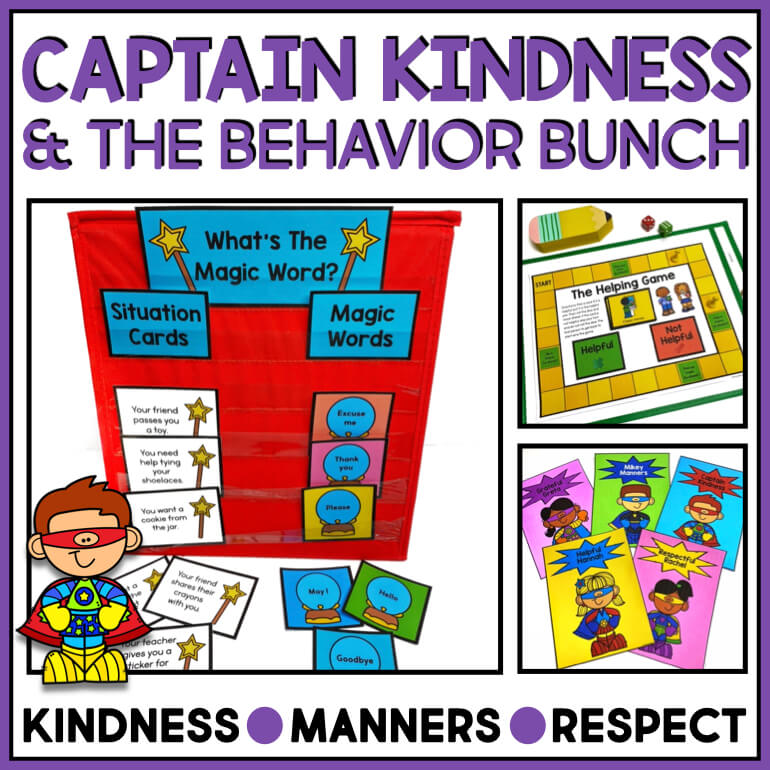
Looking for more back-to-school ideas and activities? Take a look at these posts:



SAVE THESE IDEAS
Take a minute to save these tips to your favorite back to school Pinterest board so you can remember them later!
